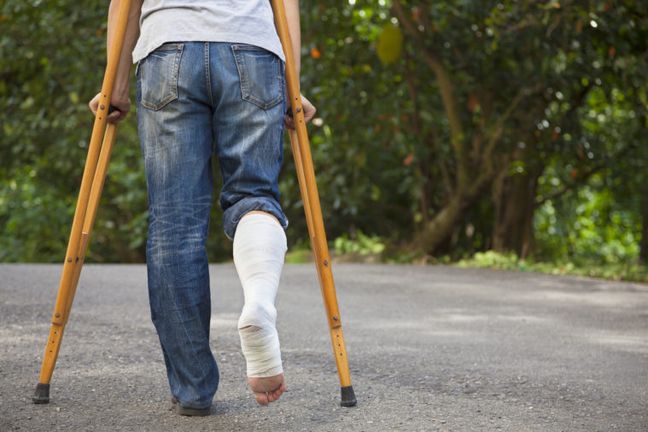Introduction
Throughout California and the United States, there is a rising trend of Nuclear Verdicts™, defined as jury verdicts in excess of $10 million or that are wildly disproportionate to the injuries in the case. A new Senate Bill signed into law threatens to become yet another factor increasing the likelihood of Nuclear Verdicts™ around the state of California. With Nuclear Verdicts™ already on the rise across the country, this bill could continue to change the landscape of California’s litigation, giving plaintiffs’ attorneys even more ways to obtain significant judgments disproportionate to the facts of a case.
Senate Bill 447
Senate Bill 447 amended Section 377.34 of the Code of Civil Procedure.[i] Generally, section 377.34 (a) describes how damages are limited for a decedent’s personal representative or successor in interest:
…the damages recoverable are limited to the loss or damage that the decedent sustained or incurred before death, including any penalties or punitive or exemplary damages that the decedent would have been entitled to recover had the decedent lived, and do not include damages for pain, suffering, or disfigurement.[ii]
In relevant part, Section 377.34 (b) enumerates a very impactful change to the law:
Notwithstanding subdivision (a), in an action or proceeding by a decedent’s personal representative or successor in interest on the decedent’s cause of action, the damages recoverable may include damages for pain, suffering, or disfigurement if the action or proceeding was granted a preference pursuant to Section 36 before January 1, 2022, or was filed on or after January 1, 2022, and before January 1, 2026.[iii]
What Does This Mean?
Pain and suffering often constitutes a huge portion of many Nuclear Verdicts™. With SB 447 now making these damages available to plaintiffs filing on behalf of decedents, pain and suffering awards are at risk of skyrocketing. How much pain did a person experience as they died? Plaintiffs can now recover for this complicated concept. Plaintiffs’ attorneys will no doubt try to sway jurors with this new guideline by amplifying the pain purportedly experienced by individuals as they died. This will be a huge factor leading to more Nuclear Verdicts™ in California wrongful death cases.
How Can We Fight It?
Just like plaintiffs, defendants need to argue pain and suffering! Counsel should contextualize pain and suffering by focusing the jury on two concepts: the impact of the money on plaintiff’s life and/or the impact of the accident on plaintiff’s life.
Defense attorneys should scrutinize the damages prayer on behalf of a plaintiff. Will the jury award put the plaintiff in the top 1% of wealthy individuals in the world? Does the prayer have any real relationship to the decedent and/or the plaintiff seeking reasonable compensation? Defendants should provide a comparison for the jury to understand how the proposed defense damages number could benefit and make plaintiff whole again. This type of argument, grounded in evidence and common sense, can support a jury towards a fair damages value for pain and suffering.
It is about more than just the number, though. Defense attorneys must tell a story validating the number. Plaintiffs will surely tell a story, so defense attorneys need to make their own story more compelling. Jurors would much rather hear a positive story of hope and a better future through healing for a plaintiff than a tale of despair and woe. A good defense attorney must show the jury how the defendant’s number will make the plaintiff whole and give plaintiff a chance for a better life.
Plaintiffs’ attorneys are well-versed in telling elaborate stories about their clients – who they were before the accident, what happened during and immediately following the accident, and why their life will never return to “normal.” But there is more to this story plaintiffs’ counsel tends to leave out. It is the story of optimism rooted in truth; the story of plaintiff’s resilience; the story of an opportunity to triumph out of tragedy. The defense must tell that story, and it must be more plausible and encouraging than the plaintiff’s story.
Defendants can argue pain and suffering by describing how the accident impacted plaintiff and how a reasonable damages award will allow plaintiff to recover and heal in proportion to such impact. Money cannot bring a loved one back from the dead – nothing can – but money can restore some normalcy to life and assist in the healing process. Rather than providing a windfall divorced from the facts of a case, a justified damages award can help plaintiffs find solace through therapy, take time off from work to recover, fully immerse themselves in their hobbies, and spend time with the people and things in life that bring joy. These paths to healing and recovery are made available to plaintiffs through a pain and suffering award grounded in reality, in evidence, in the law. The change in the law does not change the fact that a gratuitous award of millions of dollars for pain and suffering will not revive a loved one. And it will not serve justice. That is done only through a verdict commensurate with the facts at issue contextualized through a compelling explanation focusing a jury on how that reasonable verdict will best help the suffering plaintiffs.
[i] Senate Bill 447.
[ii] Id.
[iii] Id.

 Author: Daniel Fallon
Author: Daniel Fallon
 Editor: Grace Shuman
Editor: Grace Shuman
 Cannabis Workers Allege Quota to Trim 4 Pounds a Day Violates the California Labor Code
Cannabis Workers Allege Quota to Trim 4 Pounds a Day Violates the California Labor Code
 The Ninth Circuit Reminds Us: Every Word Matters
The Ninth Circuit Reminds Us: Every Word Matters
 NO WAY, PRO SE! The Consequences of Abusing the Judicial System as a Pro Se Litigant in Colorado
NO WAY, PRO SE! The Consequences of Abusing the Judicial System as a Pro Se Litigant in Colorado
 Victim of Financial Mismanagement or Unlawful Retaliation? New Jersey City University Program Founder Claims School Retaliated After Reporting Alleged Sexual Harassment
Victim of Financial Mismanagement or Unlawful Retaliation? New Jersey City University Program Founder Claims School Retaliated After Reporting Alleged Sexual Harassment
 “Real Housewives” Gets a Reality Check
“Real Housewives” Gets a Reality Check
 Missing a Chapter: Insufficiency of Expert Deposition Testimony in Medical Malpractice Litigation
Missing a Chapter: Insufficiency of Expert Deposition Testimony in Medical Malpractice Litigation
 Crash Course: Why Summary Judgment Misses the Mark in Illinois Multi-Cause Limousine Crash Collision
Crash Course: Why Summary Judgment Misses the Mark in Illinois Multi-Cause Limousine Crash Collision
 Bitter Truths: Lead, Cadmium, and Defective Pleadings in California Chocolate Class Action
Bitter Truths: Lead, Cadmium, and Defective Pleadings in California Chocolate Class Action
 The Law of Unintended Consequences: Including Insurance Brokers in Litigation Strategy Communication May Waive the Attorney-Client Privilege
The Law of Unintended Consequences: Including Insurance Brokers in Litigation Strategy Communication May Waive the Attorney-Client Privilege
 The Final Countdown: Time-Limited Demands in California
The Final Countdown: Time-Limited Demands in California
 Exploring the Defense Arsenal: How to attack inflated damages in professional malpractice and catastrophic injury cases
Exploring the Defense Arsenal: How to attack inflated damages in professional malpractice and catastrophic injury cases